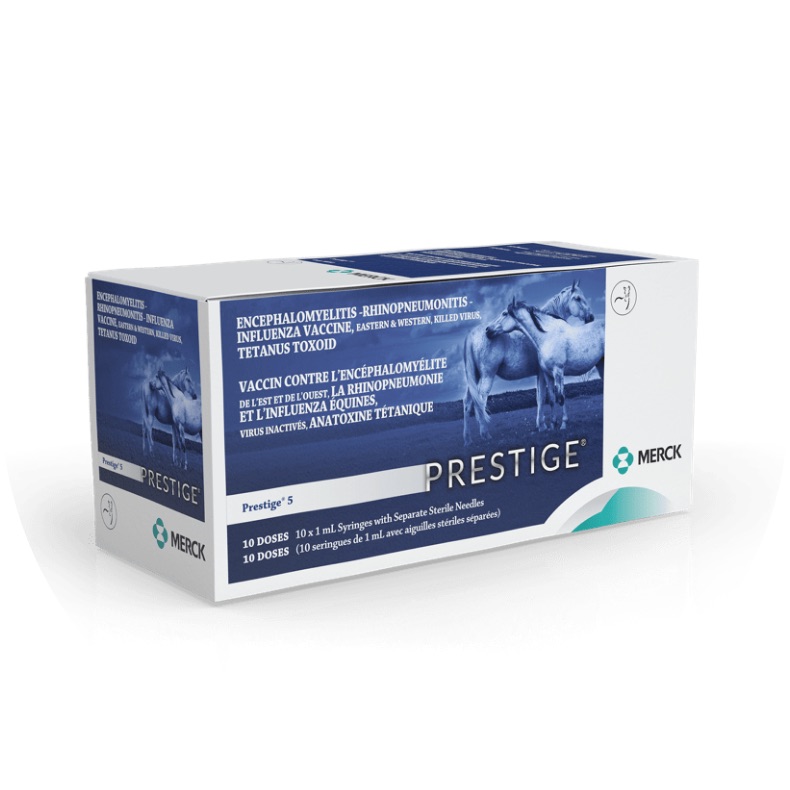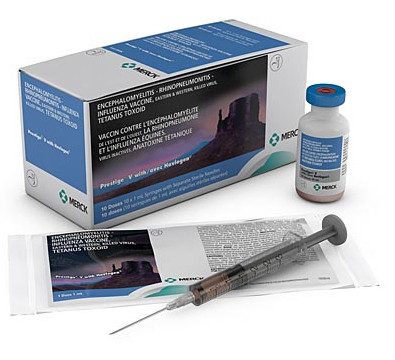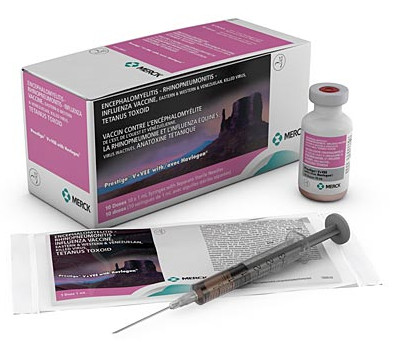Equine Rhinopneumonitis (EHV-1 and EHV-4)
Disease Overview
Viruses that are prevalent in horses and can cause outbreaks of respiratory disease.
Merck Animal Health Solutions
For Equine Rhinopneumonitis (EHV-1 and EHV-4)
Prestige flu-containing equine vaccines contain the most updated flu strains available.
For vaccination of healthy horses 6 months of age or older, as an aid in the prevention of disease caused by Eastern and Western encephalomyelitis viruses and tetanus, as an aid in the control of respiratory disease caused by EIV, EHV-1 and EHV-4 and as an aid in reduction of virus shedding of EIV and EHV-1. Duration of immunity (DOI) has been shown to be at least six months for EIV.
For vaccination of healthy horses 6 months of age or older, as an aid in the prevention of disease caused by Eastern, Western and Venezuelan encephalomyelitis viruses and tetanus, as an aid in the control of respiratory disease caused by EIV, EHV-1 and EHV-4 and as an aid in reduction of virus shedding of EIV and EHV-1. Duration of immunity (DOI) has been shown to be at least six months for EIV.
Clinical Signs
Typical signs of equine herpesvirus respiratory disease include fever, congestion, cough, loss of appetite, nasal and eye discharges, fatigue, and swollen lymph nodes. An animal’s first exposure to the disease generally produces more severe signs, whereas later exposures cause mild or inapparent infections. Secondary bacterial infections can occur and should be suspected when fever persists beyond a week, the nasal discharge becomes thick and yellow instead of watery, or the cough worsens.




